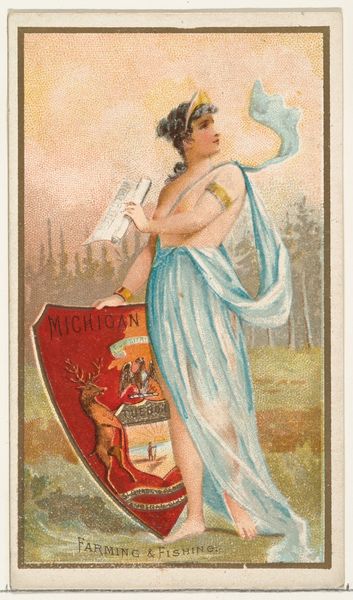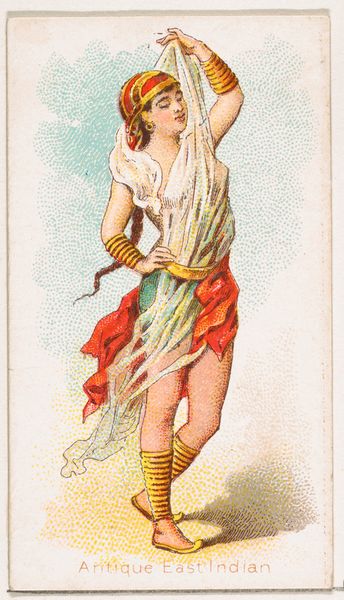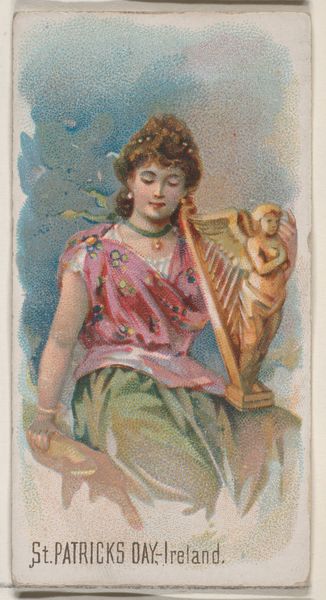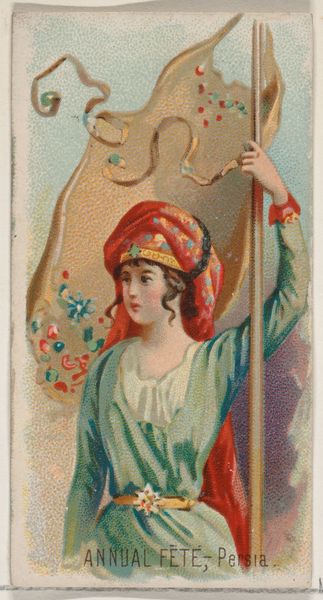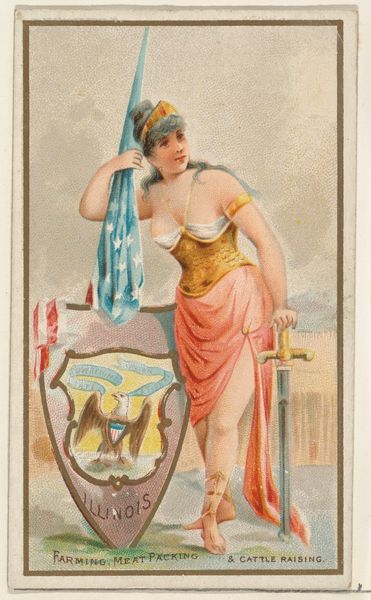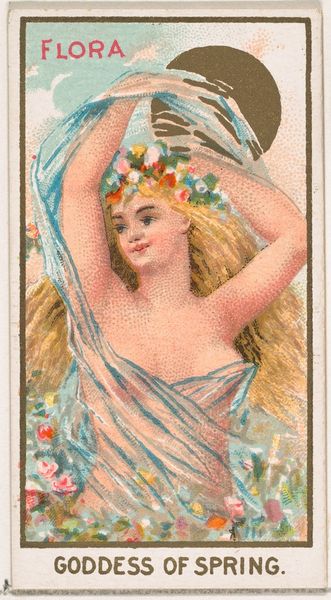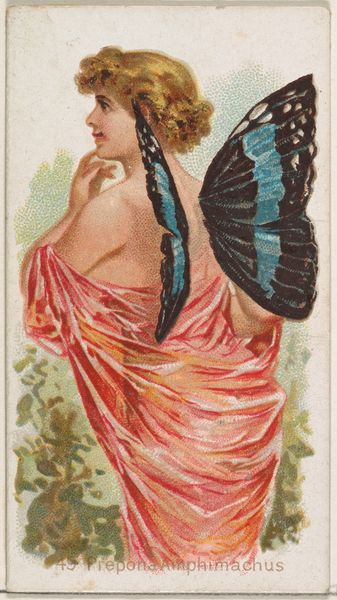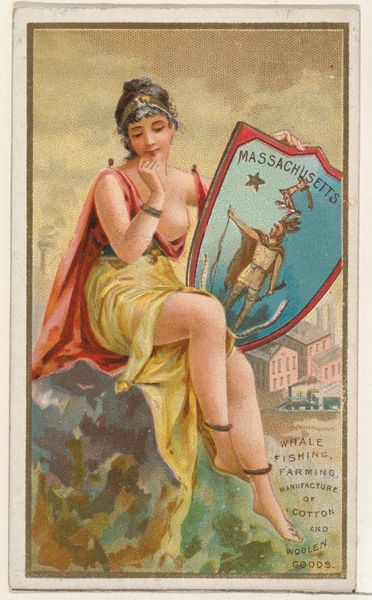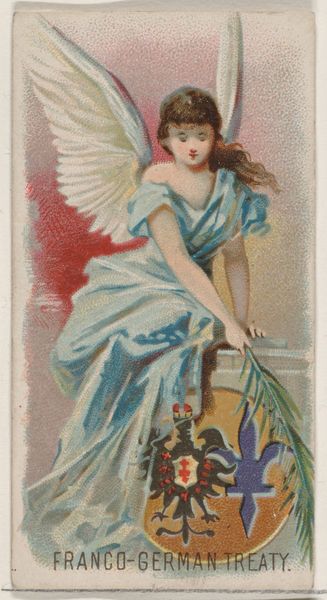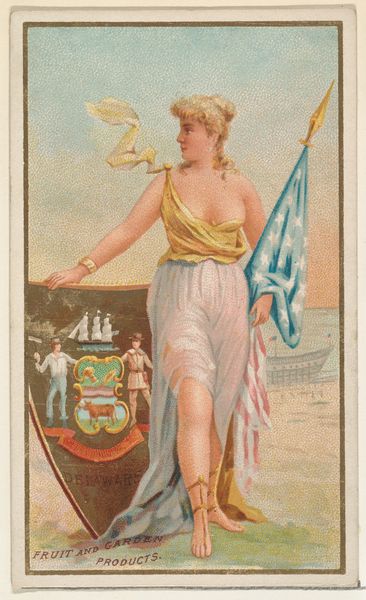
Independence Day, Belgium, Austria, from the Holidays series (N80) for Duke brand cigarettes 1890
0:00
0:00
drawing, print, watercolor
#
portrait
#
drawing
#
allegory
# print
#
impressionism
#
figuration
#
watercolor
#
decorative-art
Dimensions: Sheet: 2 3/4 x 1 1/2 in. (7 x 3.8 cm)
Copyright: Public Domain
Curator: This watercolor print, hailing from 1890, is from a series produced by W. Duke, Sons & Co. called “Holidays.” This one specifically depicts Independence Day, Belgium. Editor: It's visually striking, almost dreamlike. The figure seems to float ethereally in front of that intense Belgian flag. The details of her gown hint at machine production due to their precision and intricacy. Curator: Absolutely. She is portrayed as an allegorical figure. Note how she's adorned in classical drapery, evoking notions of liberty and virtue common in such depictions. She’s holding up a wreath, a traditional symbol of victory and honor. The print seems to conflate Belgium itself with a Goddess-like symbol. Editor: Yes, and placing that kind of symbolic weight on an image meant for mass consumption as a cigarette card speaks volumes. It shows the reach and power of printed materials to disseminate national identity. Look at how the very paper quality must have played a role, designed to hold the ink in those very tight details of dress. Curator: Cigarette cards like these functioned as miniature carriers of cultural memory, solidifying particular understandings of national pride and identity. They became ingrained within the popular consciousness through repetition. How did Belgium want to present itself? Editor: It all seems designed for widespread circulation, produced at a scale designed to appeal to ordinary consumers. And while we analyze the visual elements, one cannot ignore that it was a marketing tool connected to a highly addictive product. Curator: That contrast does invite a certain tension into our perception of national symbols. It's a confluence of consumer culture and national narratives, playing out on something as everyday as a cigarette card. Editor: Precisely. This piece really pushes us to see how intertwined labor, materials, and cultural ideals are, prompting me to reconsider those sharp divisions between craft and industrial art that are deeply woven in our society. Curator: It compels a re-evaluation of how even seemingly insignificant objects carry profound emotional, historical, and political importance. It’s not merely about what’s represented, but how and why it was disseminated, too.
Comments
No comments
Be the first to comment and join the conversation on the ultimate creative platform.
